Chapter 21: Late-Nineteenth-Century Art
0.0(0)
0.0(0)
Card Sorting
1/29
Earn XP
Description and Tags
Art History
AP Art History
Realism
Impressionism
Post-Impressionism
Symbolism
Art Nouveau
Japonisme
Lithography
Caricature
Modernism
Positivism
The Stone Breakers
Nadar Raising Photography to the Height of Art
Olympia
The Valley of Mexico from the Hillside of Santa Isabel
The Horse in Motion
The Saint-Lazare Station
The Coiffure
Starry Night
Mont Saint-Victoire
The Scream
The Kiss
Burghers of Calais
12th
Study Analytics
Name | Mastery | Learn | Test | Matching | Spaced |
|---|
No study sessions yet.
30 Terms
1
New cards
Japonisme
an attraction for Japanese art and artifacts that were imported into Europe in the late nineteenth century
2
New cards
Lithography
a printmaking technique that uses a flat stone surface as a base. The artist draws an image with a special crayon that attracts ink. Paper, which absorbs the ink, is applied to the surface and a print emerges
3
New cards
Caricature
a drawing that uses distortion or exaggeration of someone’s physical features or apparel in order to make that person look foolish
4
New cards
Modernism
a movement begun in the late nineteenth century in which artists embraced the current at the expense of the traditional in both subject matter and in media. Modernist artists often seek to question the very nature of art itself
5
New cards
Plein-air
painting in the outdoors to directly capture the effects of light and atmosphere on a given object
6
New cards
Positivism
a theory that expresses that all knowledge must come from proven ideas based on science or scientific theory; a philosophy promoted by French philosopher Auguste Comte (1798–1857)
7
New cards
Skeleton
the supporting interior framework of a building
8
New cards
Zoopraxiscope
a device that projects sequences of photographs to give the illusion of movement
9
New cards
Avant-garde
an innovative group of artists who generally reject traditional approaches in favor of a more experimental technique
10
New cards
Drypoint
an engraving technique in which a steel needle is used to incise lines in a metal plate. The rough burr at the sides of the incised lines yields a velvety black tone in the print
11
New cards
Aquatint
a kind of print that achieves a watercolor effect by using acids that dissolve onto a copper plate
12
New cards
Realist painters
They believe in depicting things that can be experienced with the five senses.
13
New cards
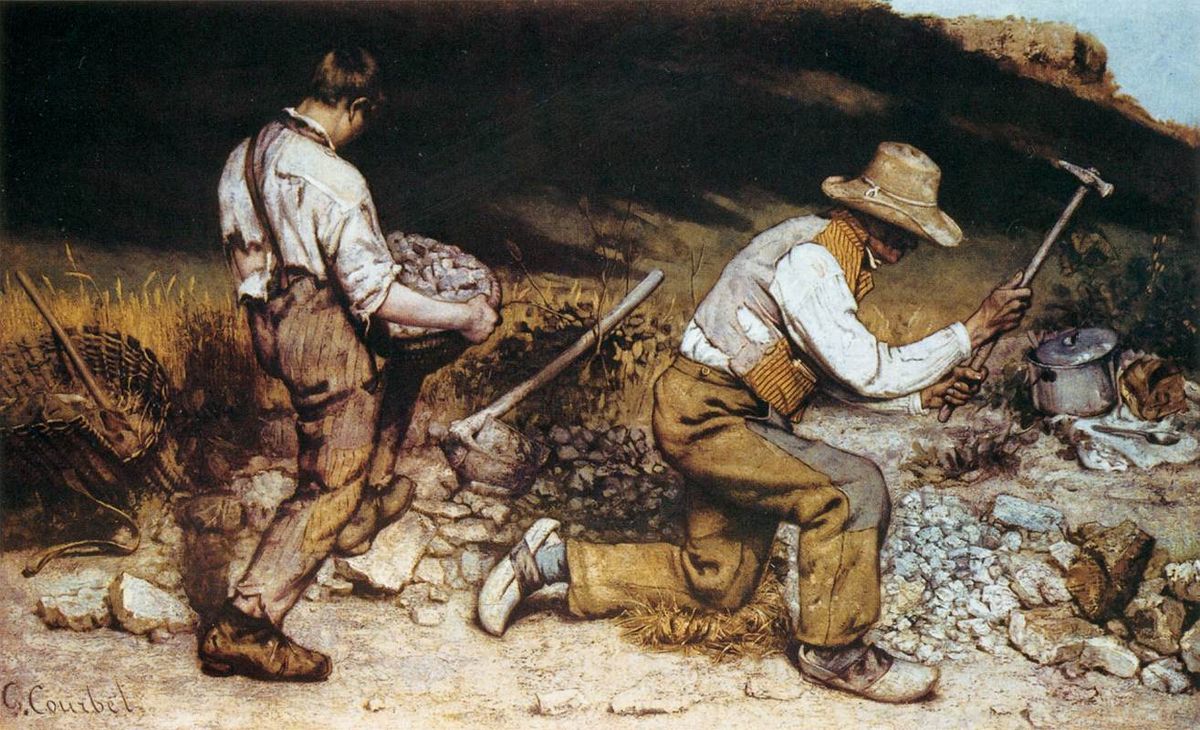
The Stone Breakers
* By Gustave Courbet (1849)
* Browns and ochres are dominant hues reflecting the drudgery of peasant life.
* Reaction to labor unrest of 1848, which demanded better working conditions.
* Browns and ochres are dominant hues reflecting the drudgery of peasant life.
* Reaction to labor unrest of 1848, which demanded better working conditions.
14
New cards
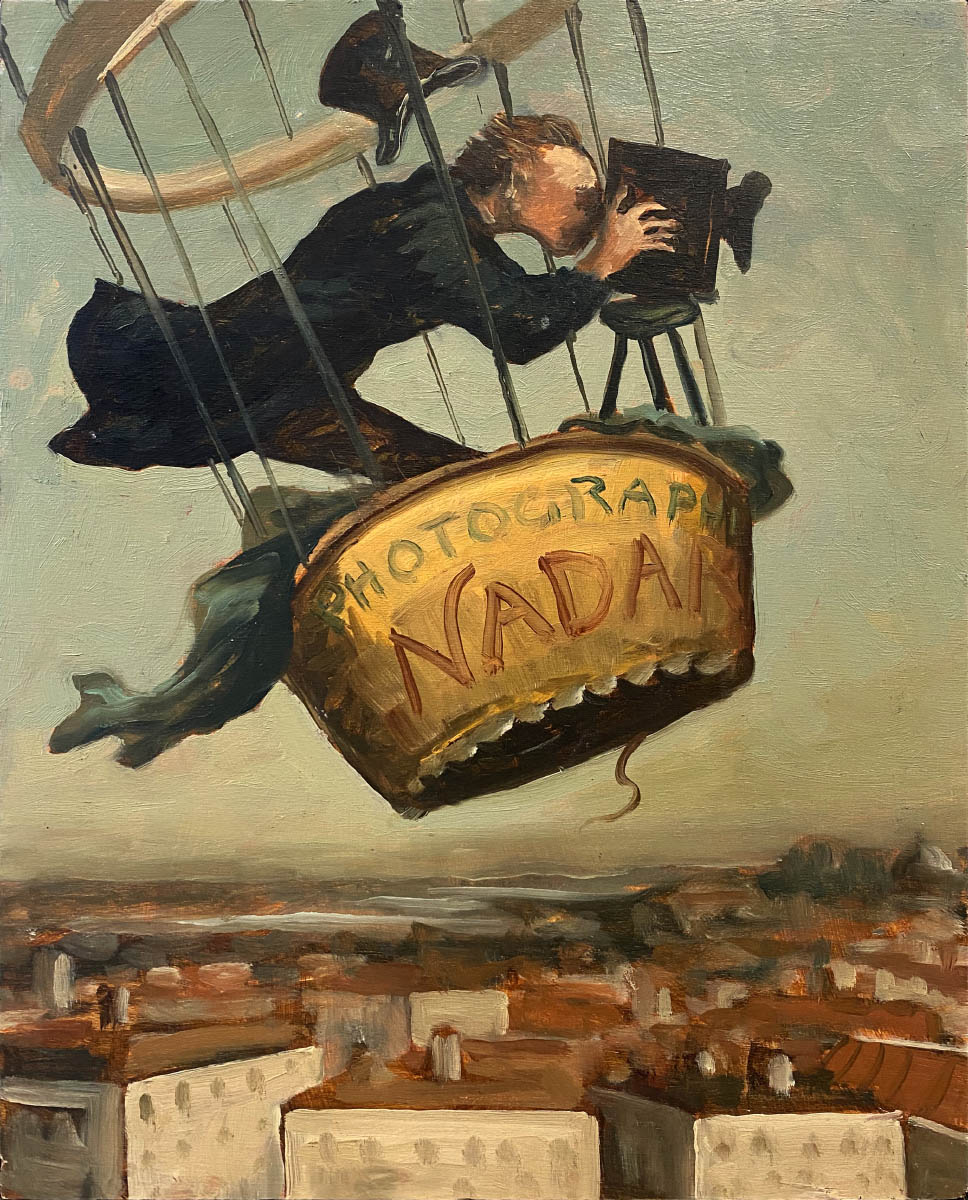
Nadar Raising Photography to the Height of Art
* By Honoré Daumier (1862)
* Originally appeared in a journal, Le Boulevard, as a mass-produced lithograph.
* The print satirizes the claims that photography can be a “high art;” irony implied in title.
* Originally appeared in a journal, Le Boulevard, as a mass-produced lithograph.
* The print satirizes the claims that photography can be a “high art;” irony implied in title.
15
New cards
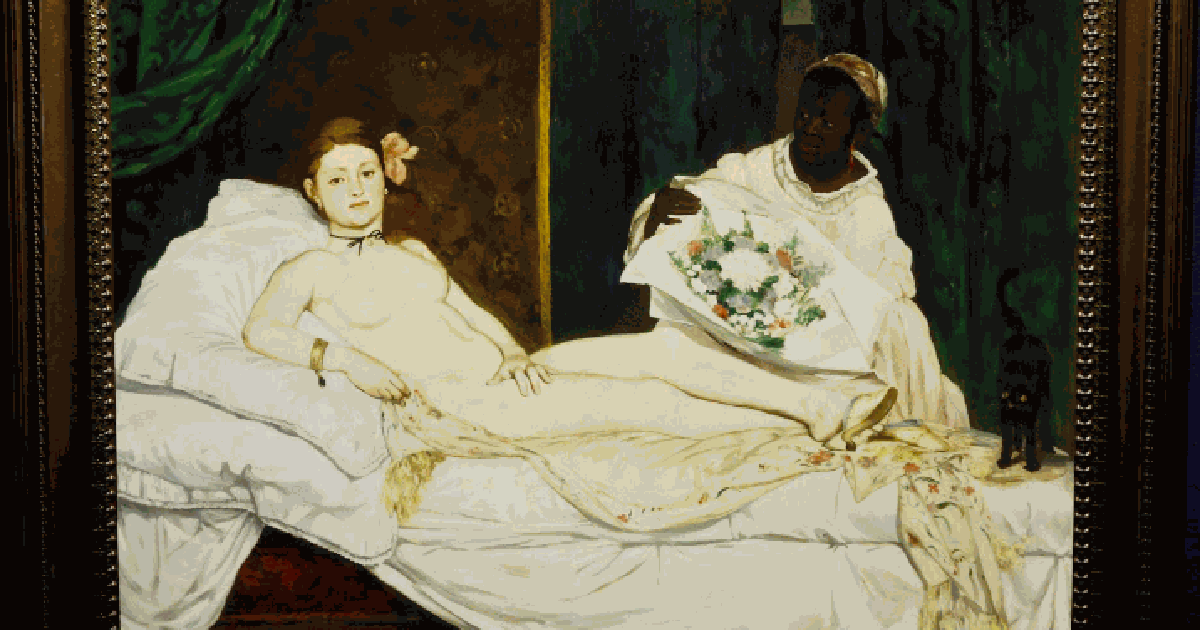
Olympia
* By Édouard Manet (1863)
* The maid delivers flowers from an admirer; a cat responds to our entry into the room.
* Manet creates a dialogue between the nude prostitute and the clothed black servant
* The maid delivers flowers from an admirer; a cat responds to our entry into the room.
* Manet creates a dialogue between the nude prostitute and the clothed black servant
16
New cards
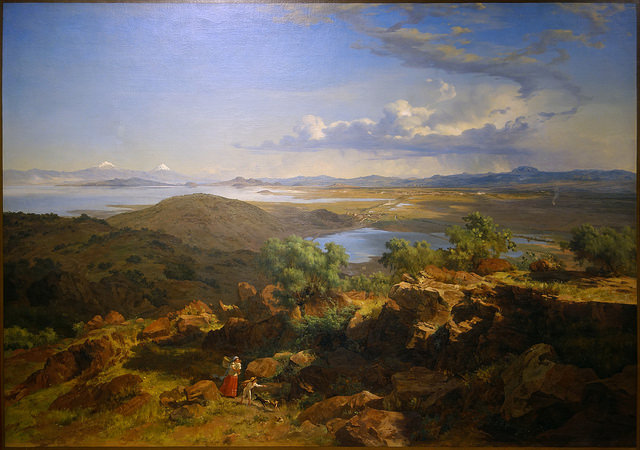
The Valley of Mexico from the Hillside of Santa Isabel (El Valle de México desde el Cerro de Santa Isabel)
* By Jose María Velasco (1882)
* The painting depicts Tepeyac and offers a sweeping view of the Valley
* The painting depicts Tepeyac and offers a sweeping view of the Valley
17
New cards
Jose María Velasco
He rejected the realist landscapes of Courbet; he preferred the romantic landscapes of Turner.
18
New cards
Leland Stanford
**The Horse in Motion** is hired by ________ to settle a bet to see if a horse’s four hooves could be off the ground at the same time during a natural gallop.
19
New cards

The Horse in Motion
* By Eadweard Muybridge (1878)
* Albumen Print
* zoopraxiscope is used; very fast shutter speeds, nearly 1/2000th of a second.
* One photograph with sixteen separate images of a horse galloping.
* Albumen Print
* zoopraxiscope is used; very fast shutter speeds, nearly 1/2000th of a second.
* One photograph with sixteen separate images of a horse galloping.
20
New cards
avant-garde
Impressionism is a modernist movement led by ____ artists.
21
New cards
bourgeois
Impressionism was originally anti-academic and anti-bourgeois, but it is now seen as the hallmark of ____ taste.
22
New cards
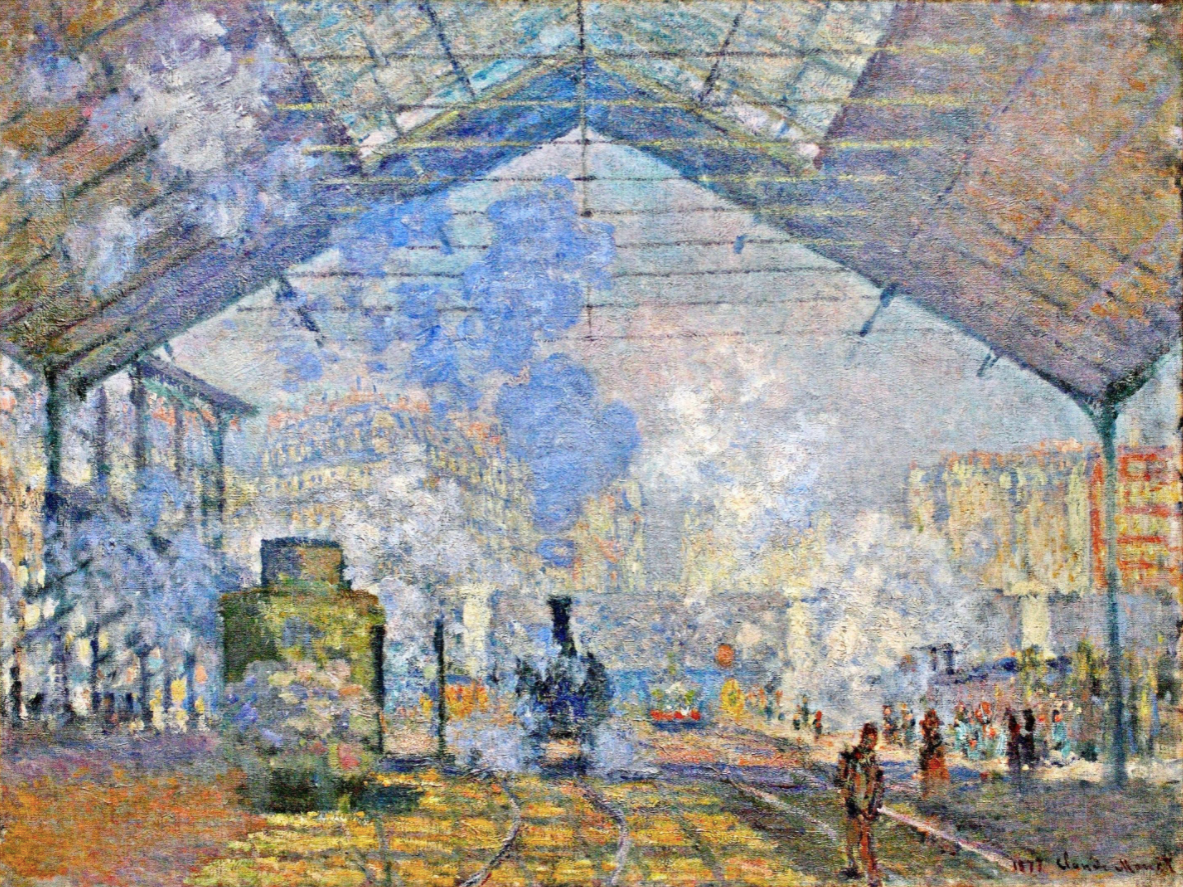
The Saint-Lazare Station
* By Claude Monet (1877)
* The painting depicts the interior of a train station in Paris
* Shows modern life in Paris with great industrial iron output
* The painting depicts the interior of a train station in Paris
* Shows modern life in Paris with great industrial iron output
23
New cards
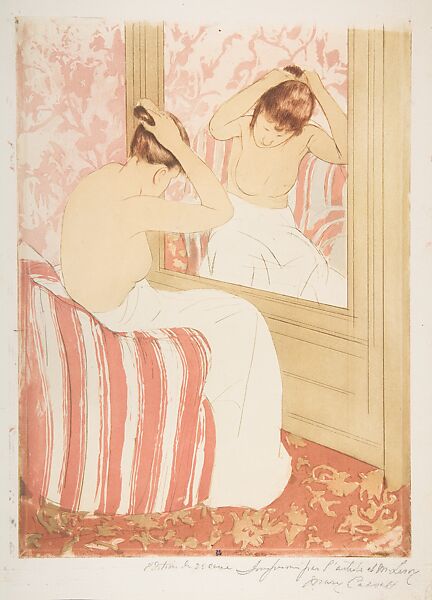
The Coiffure
* By Mary Cassatt (1890–1891)
* The work contains contrasting sensuous curves of the female figure with straight lines of the furniture and wall.
* Japanese influence
* The work contains contrasting sensuous curves of the female figure with straight lines of the furniture and wall.
* Japanese influence
24
New cards
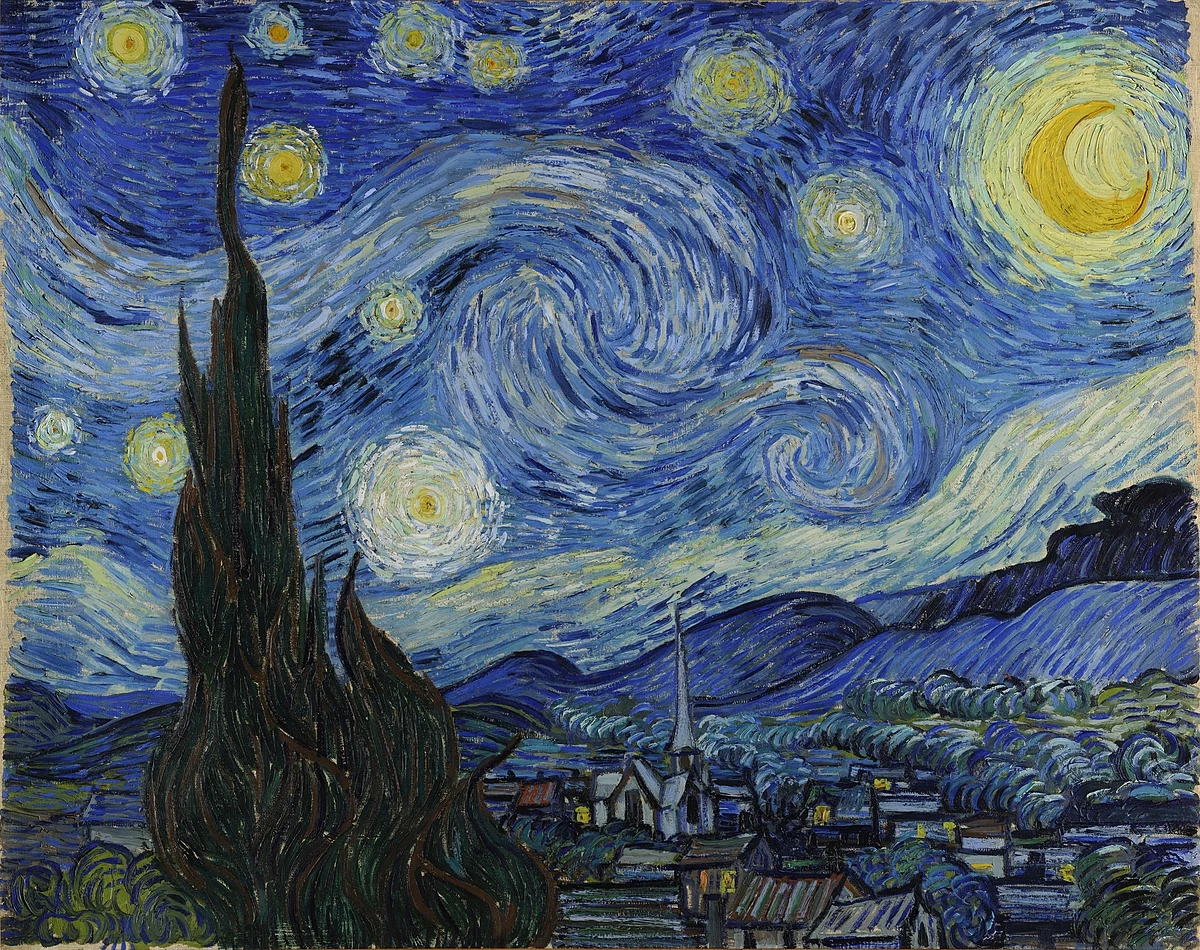
Starry Night
* By Vincent van Gogh (1889)
* Heavy application of paint called impasto.
* Dutch church, crescent moon, Mediterranean cypress tree.
* Heavy application of paint called impasto.
* Dutch church, crescent moon, Mediterranean cypress tree.
25
New cards
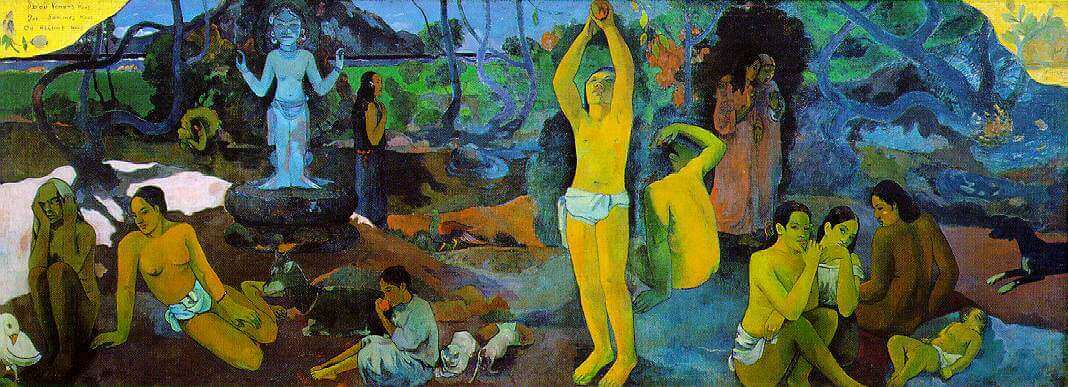
Where Do We Come From? What Are We? Where Are We Going?
* By Paul Gauguin (1897–1898)
* Gauguin thought the painting was a summation of his artistic and personal expression.
* The figures in foreground represent Tahiti and an Eden-like paradise; background figures are anguished, darkened figures.
* Gauguin thought the painting was a summation of his artistic and personal expression.
* The figures in foreground represent Tahiti and an Eden-like paradise; background figures are anguished, darkened figures.
26
New cards
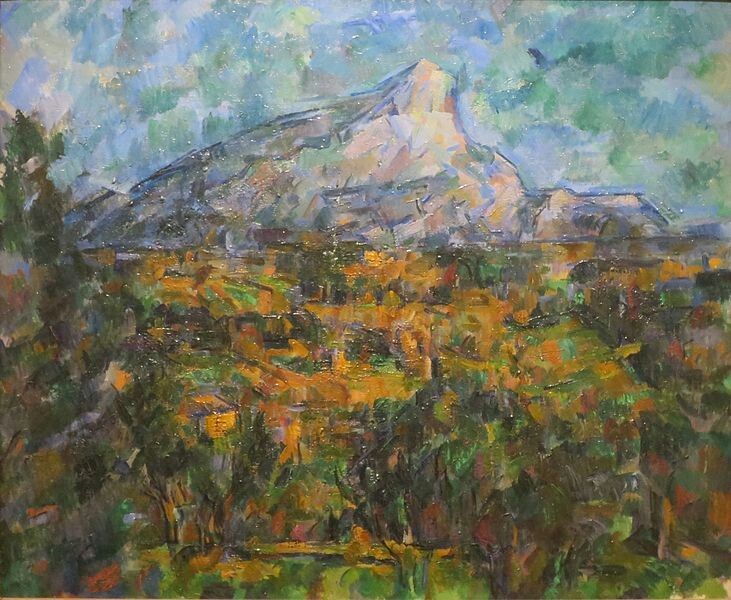
Mont Saint-Victoire
* By Paul Gauguin (1902–1904)
* Used perspective through juxtaposing forward warm colors with receding cool colors.
* One of 11 canvases of this view painted near his studio in Aix in the south of France; the series dominates Cézanne’s mature period.
* Used perspective through juxtaposing forward warm colors with receding cool colors.
* One of 11 canvases of this view painted near his studio in Aix in the south of France; the series dominates Cézanne’s mature period.
27
New cards
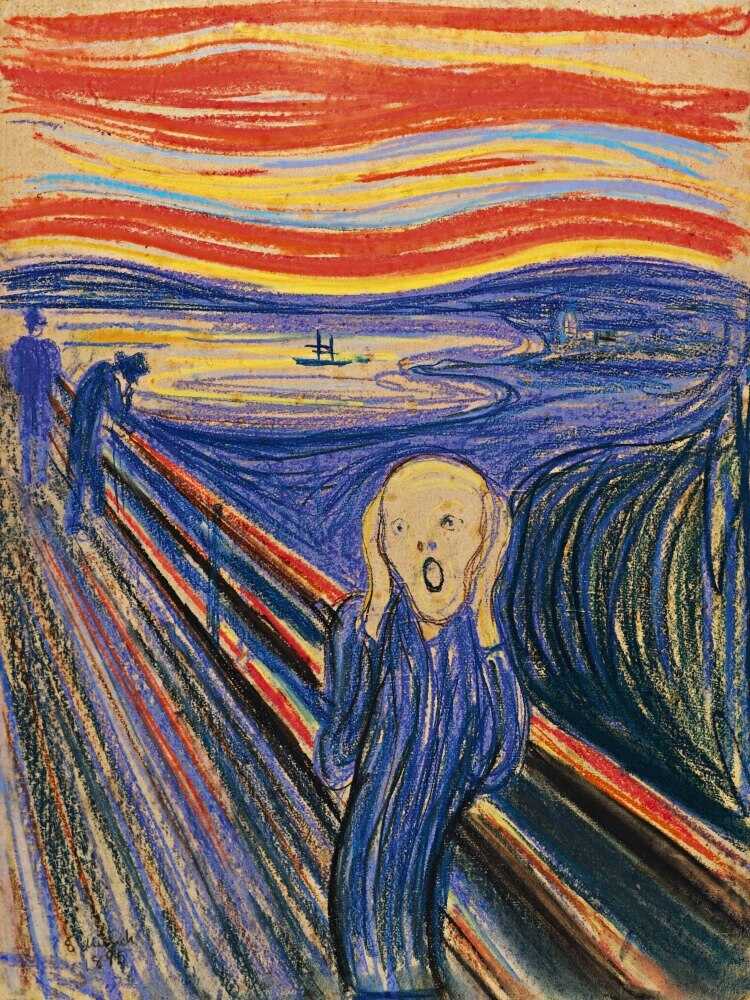
The Scream
* By Edvard Munch (1893)
* The figure cries out in a horrifying scream; the landscape echoes his emotions.
* Said to have been inspired by an exhibit of a Peruvian mummy in Paris.
* The figure cries out in a horrifying scream; the landscape echoes his emotions.
* Said to have been inspired by an exhibit of a Peruvian mummy in Paris.
28
New cards
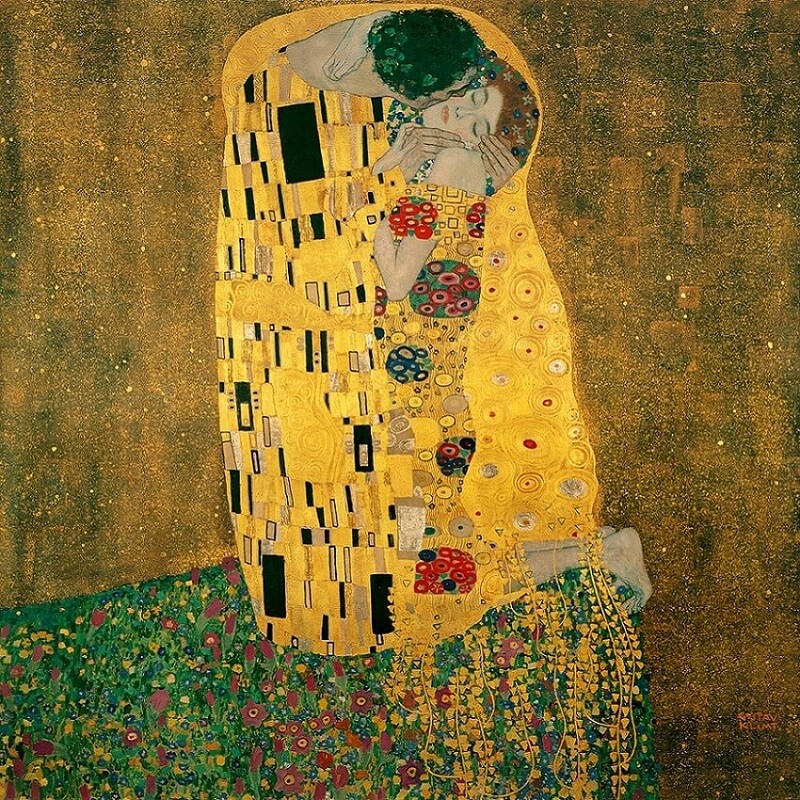
The Kiss
* By Gustav Klimt (1907–1908)
* The bodies are suggested under a sea of richly designed patterning.
* The work suggests all-consuming love; passion; eroticism.
* The use of gold leaf is reminiscent of Byzantine mosaics
* The bodies are suggested under a sea of richly designed patterning.
* The work suggests all-consuming love; passion; eroticism.
* The use of gold leaf is reminiscent of Byzantine mosaics
29
New cards
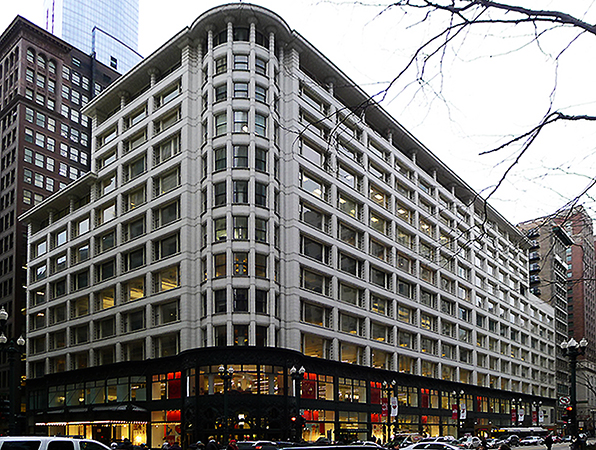
Louis Sullivan, Carson, Pirie, Scott Building
* Horizontal emphasis on the exterior mirrors the continuous flow of floor space on the interior.
* The architect designed maximum window areas to admit light, but also to make displays visible from the street.
* A department store on a fashionable street in Chicago.
* The architect designed maximum window areas to admit light, but also to make displays visible from the street.
* A department store on a fashionable street in Chicago.
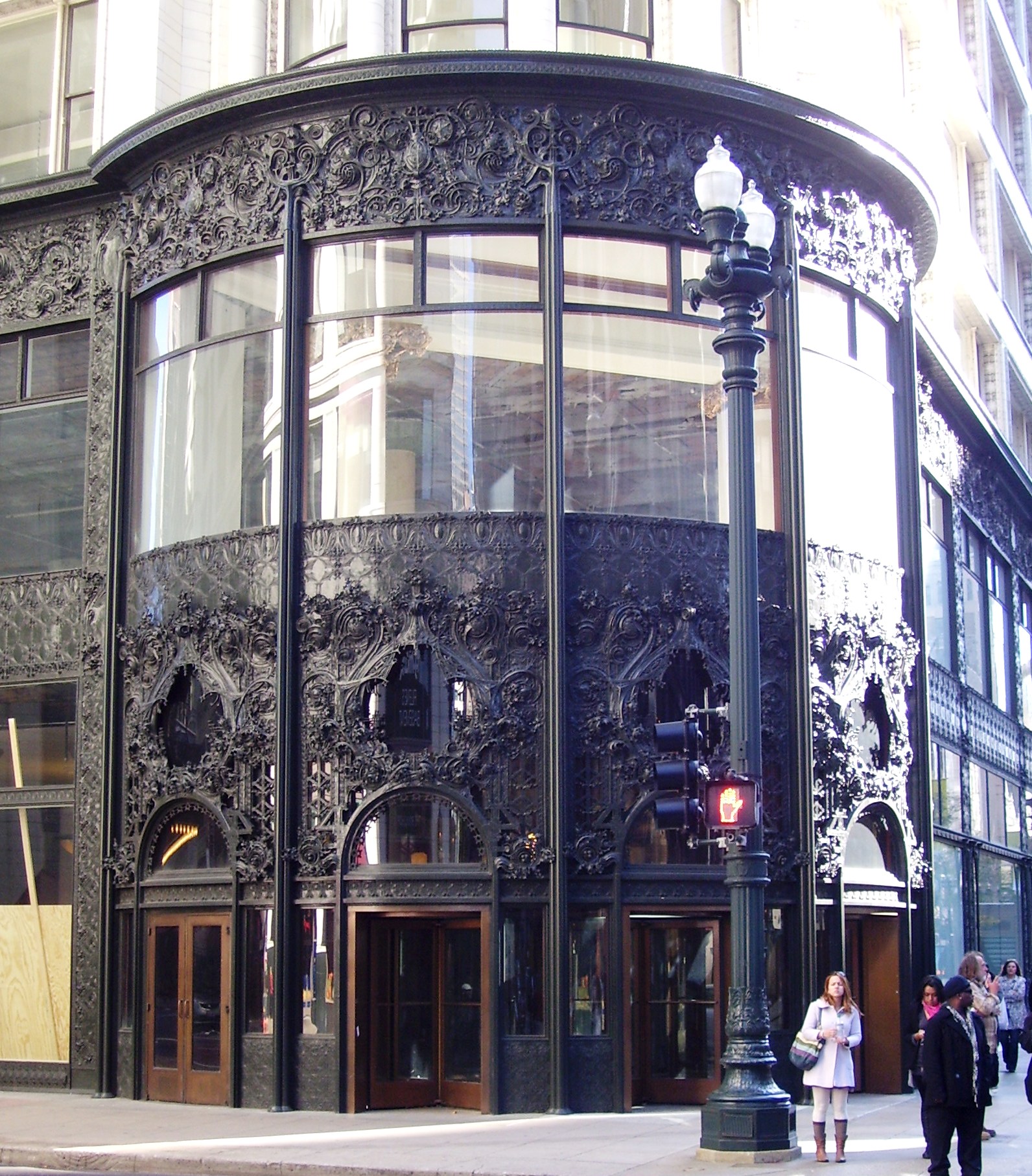
30
New cards
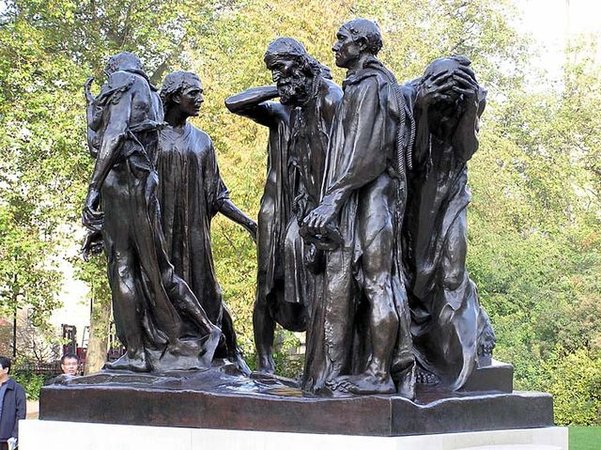
The Burghers of Calais
* By Auguste Rodin (1884–1895)
* Commissioned by the town of Calais in 1885 to commemorate six burghers who offered their lives to the English king
* Concentrates on the figures’ misery, doubt, and internal conflict.
* Commissioned by the town of Calais in 1885 to commemorate six burghers who offered their lives to the English king
* Concentrates on the figures’ misery, doubt, and internal conflict.